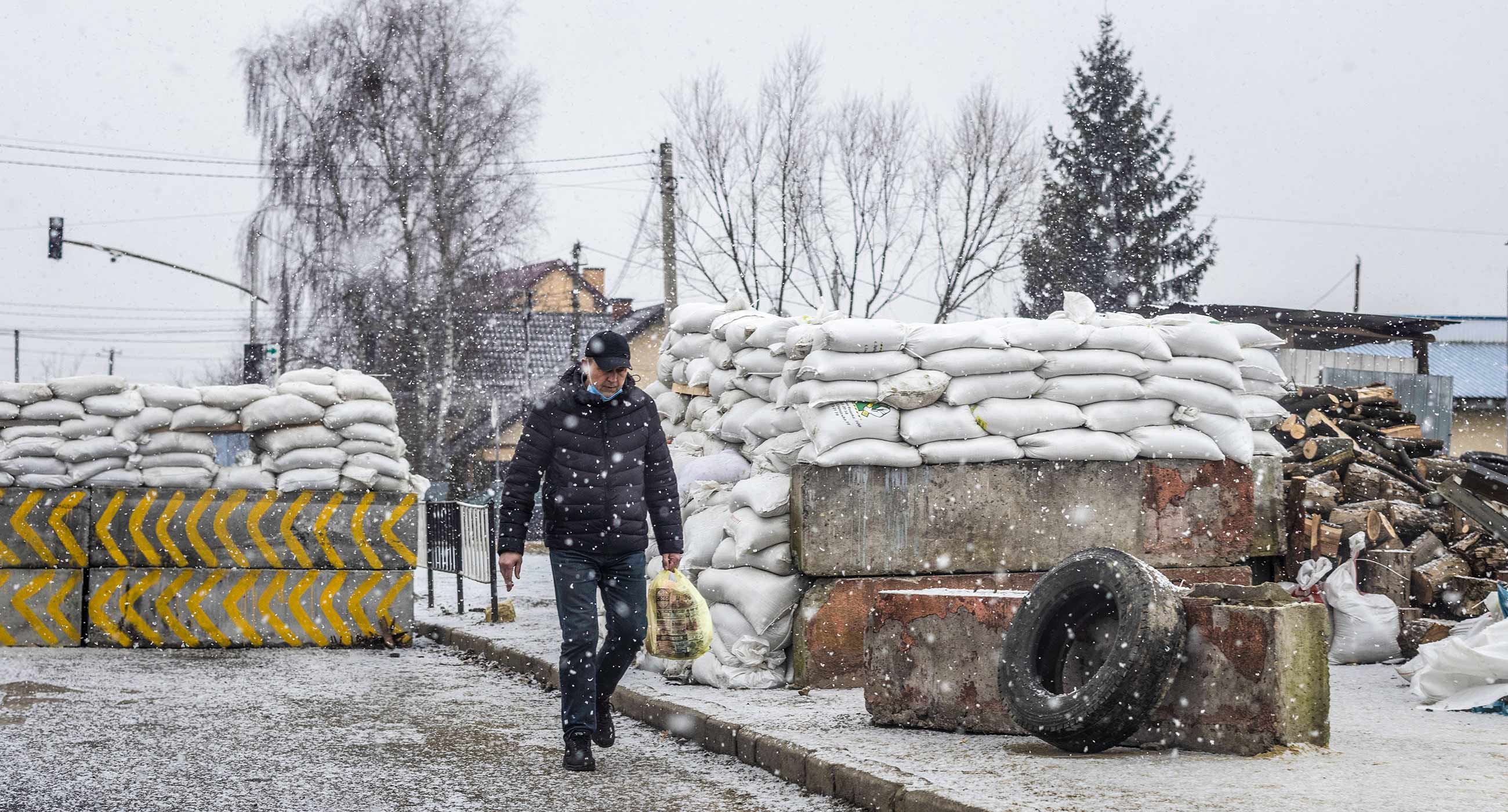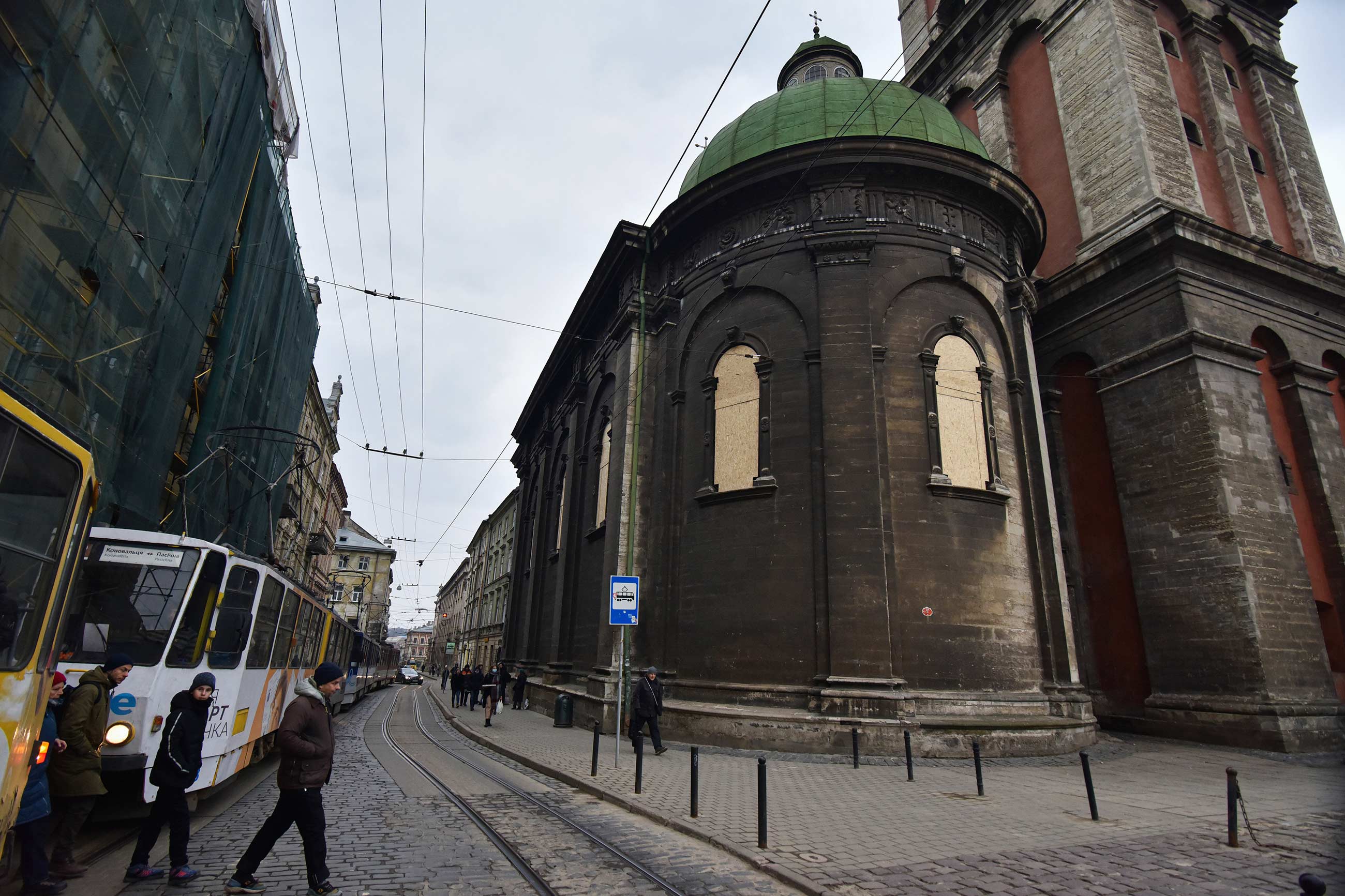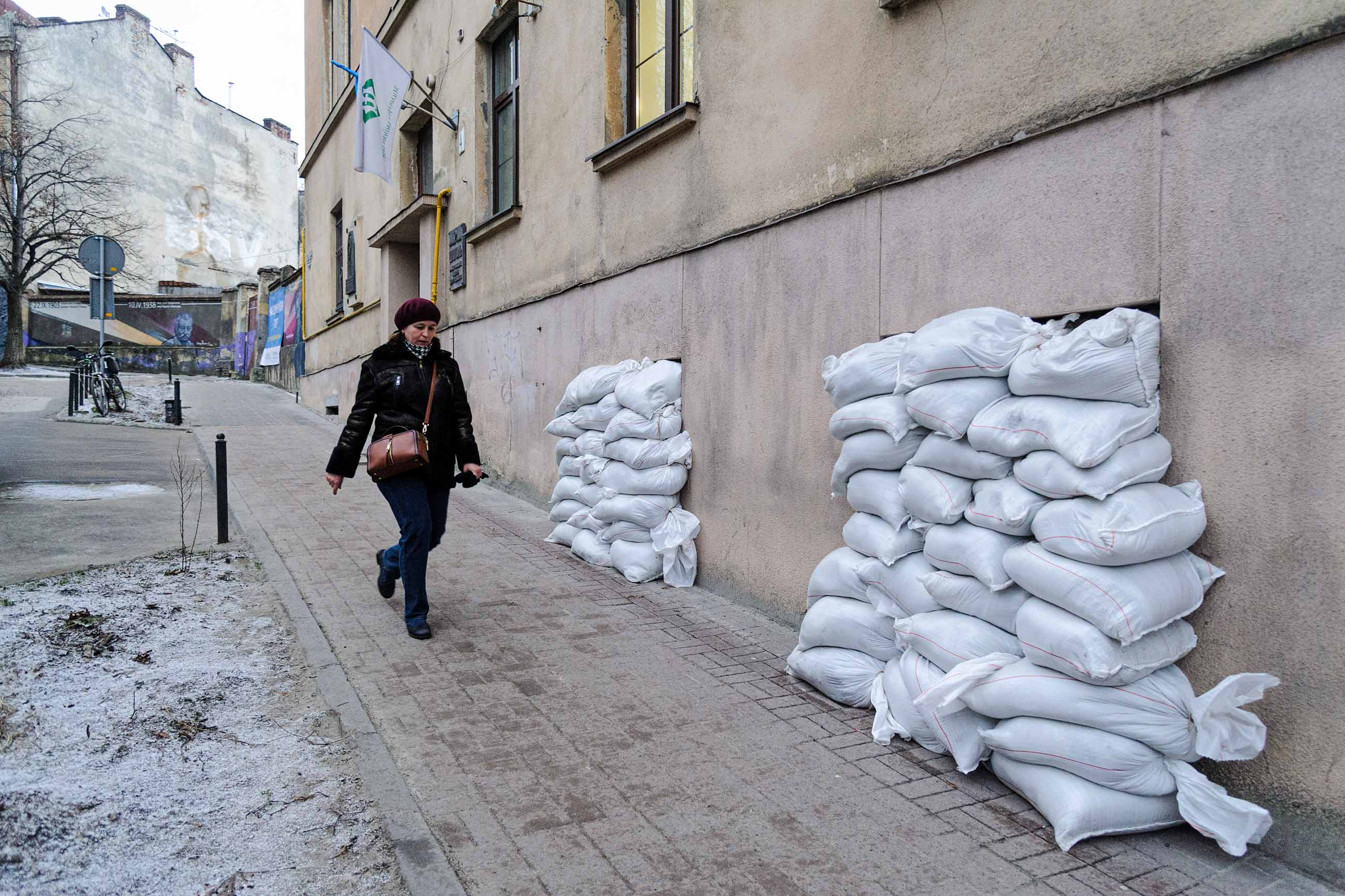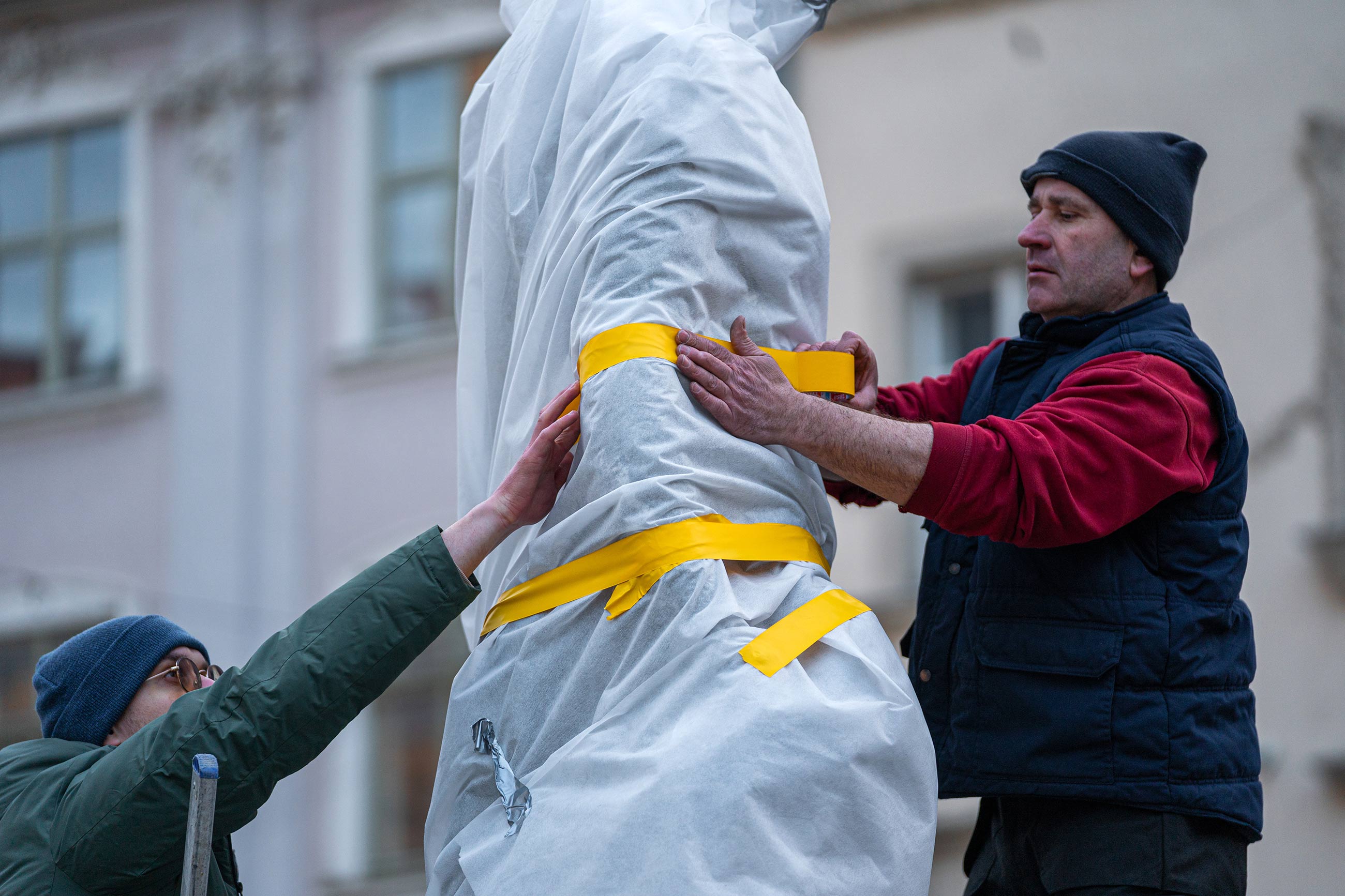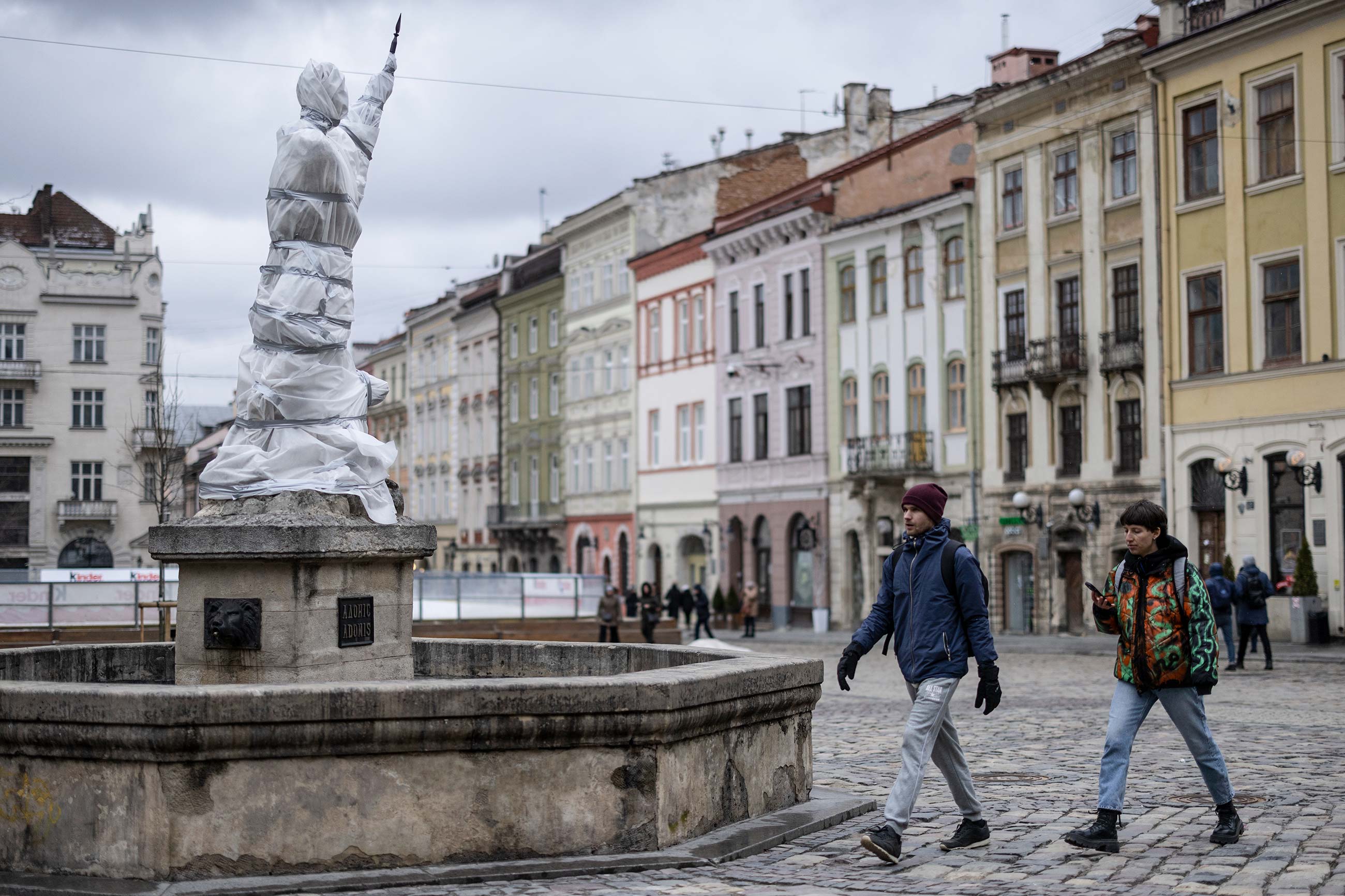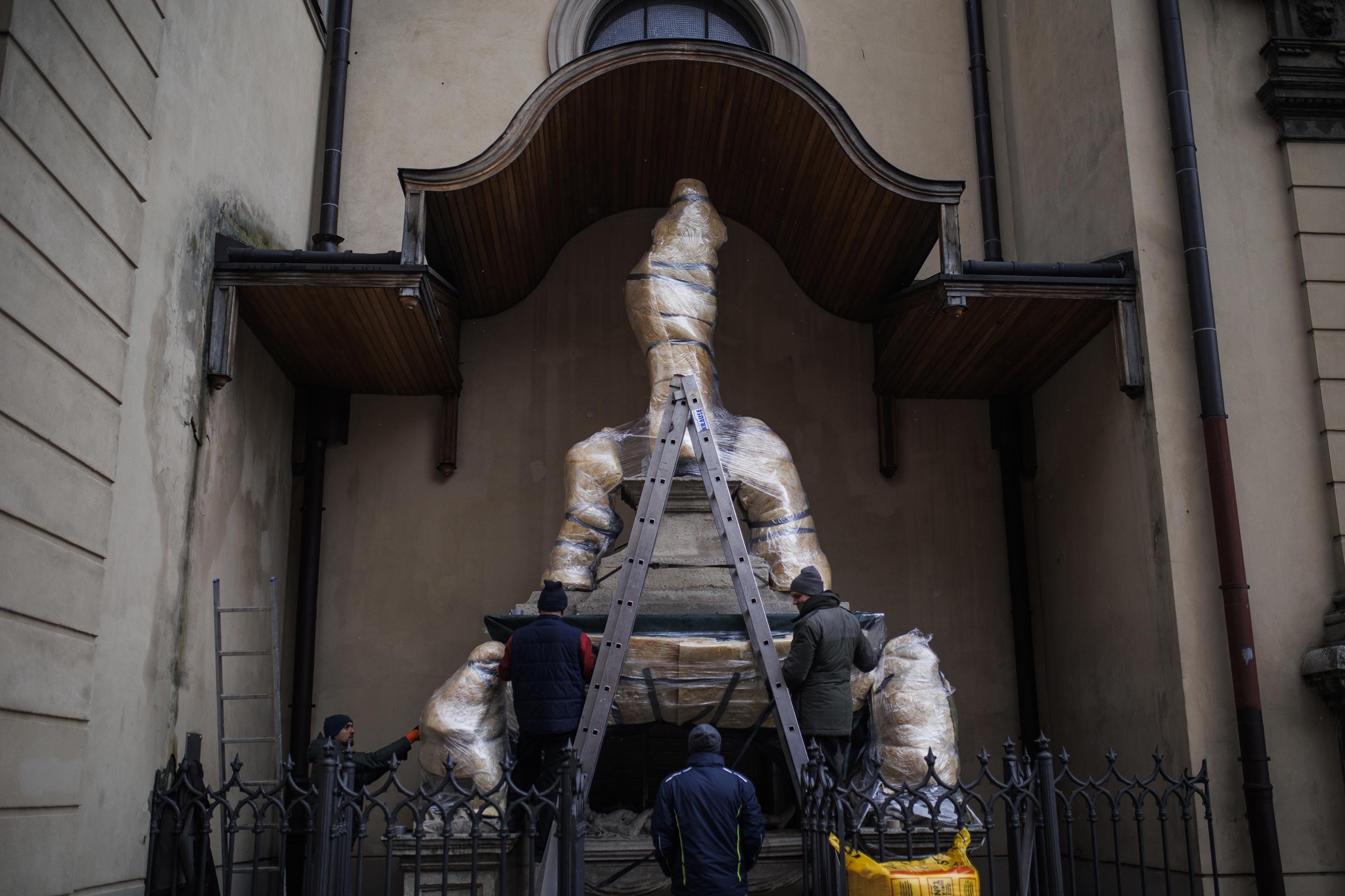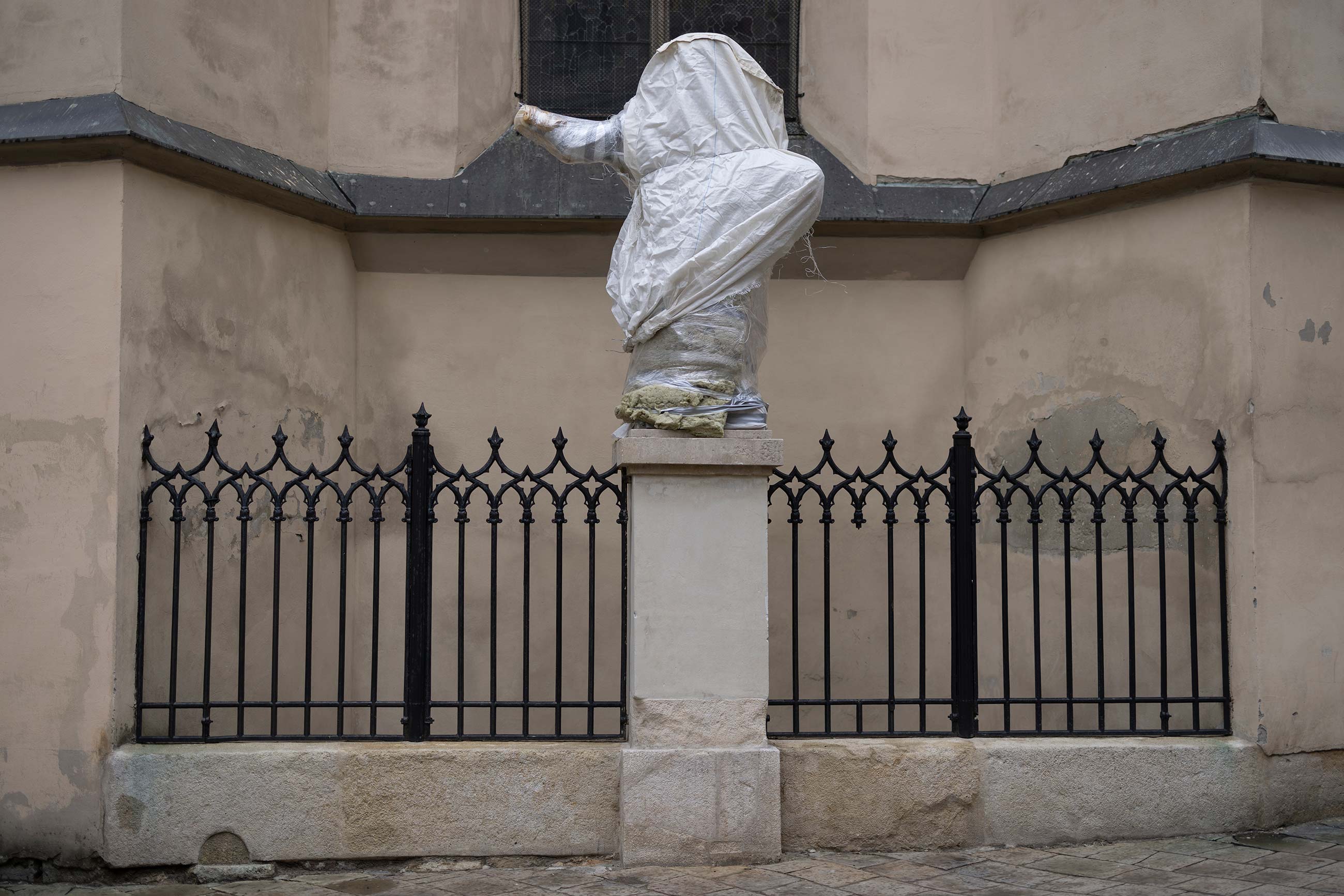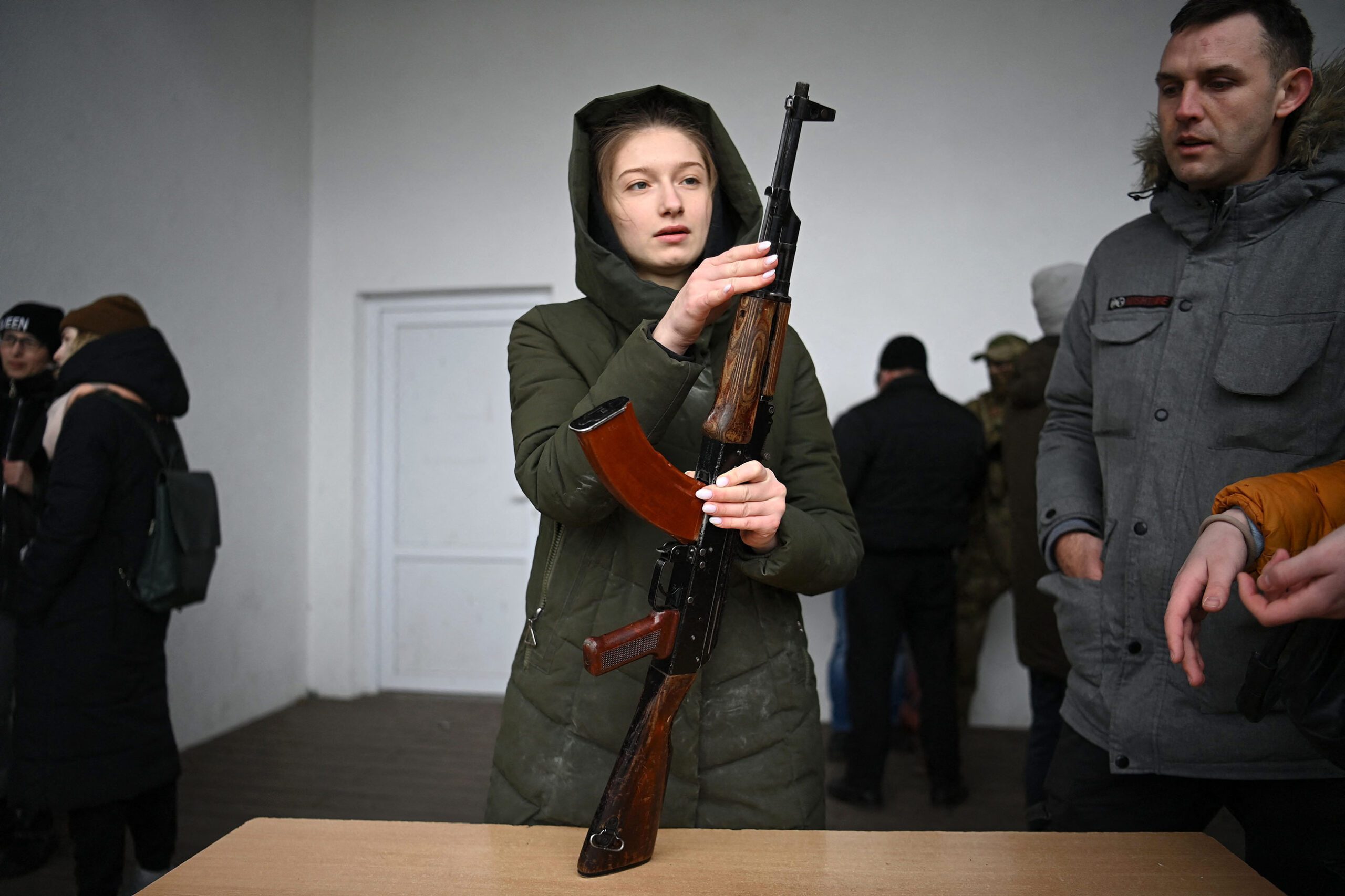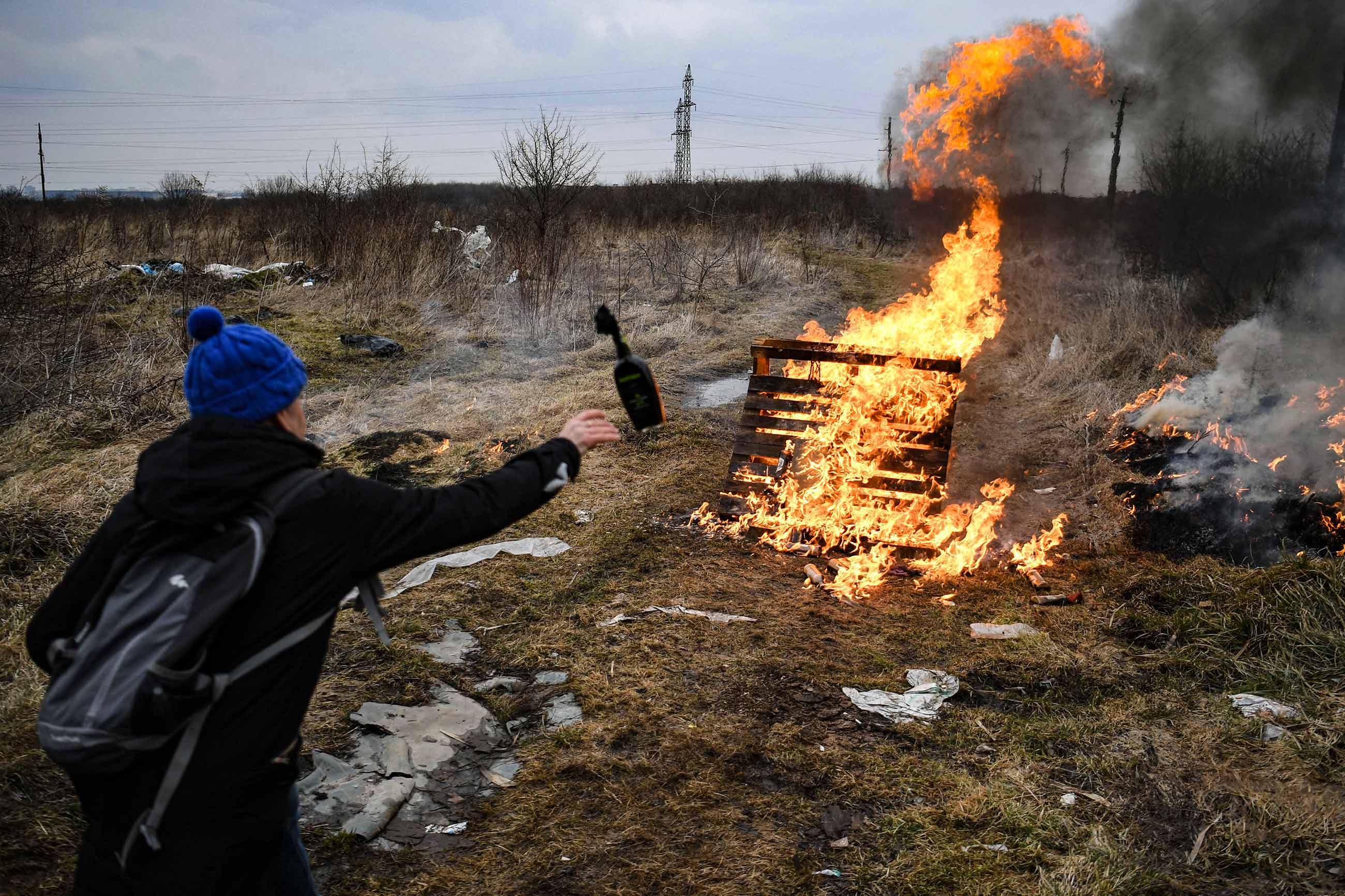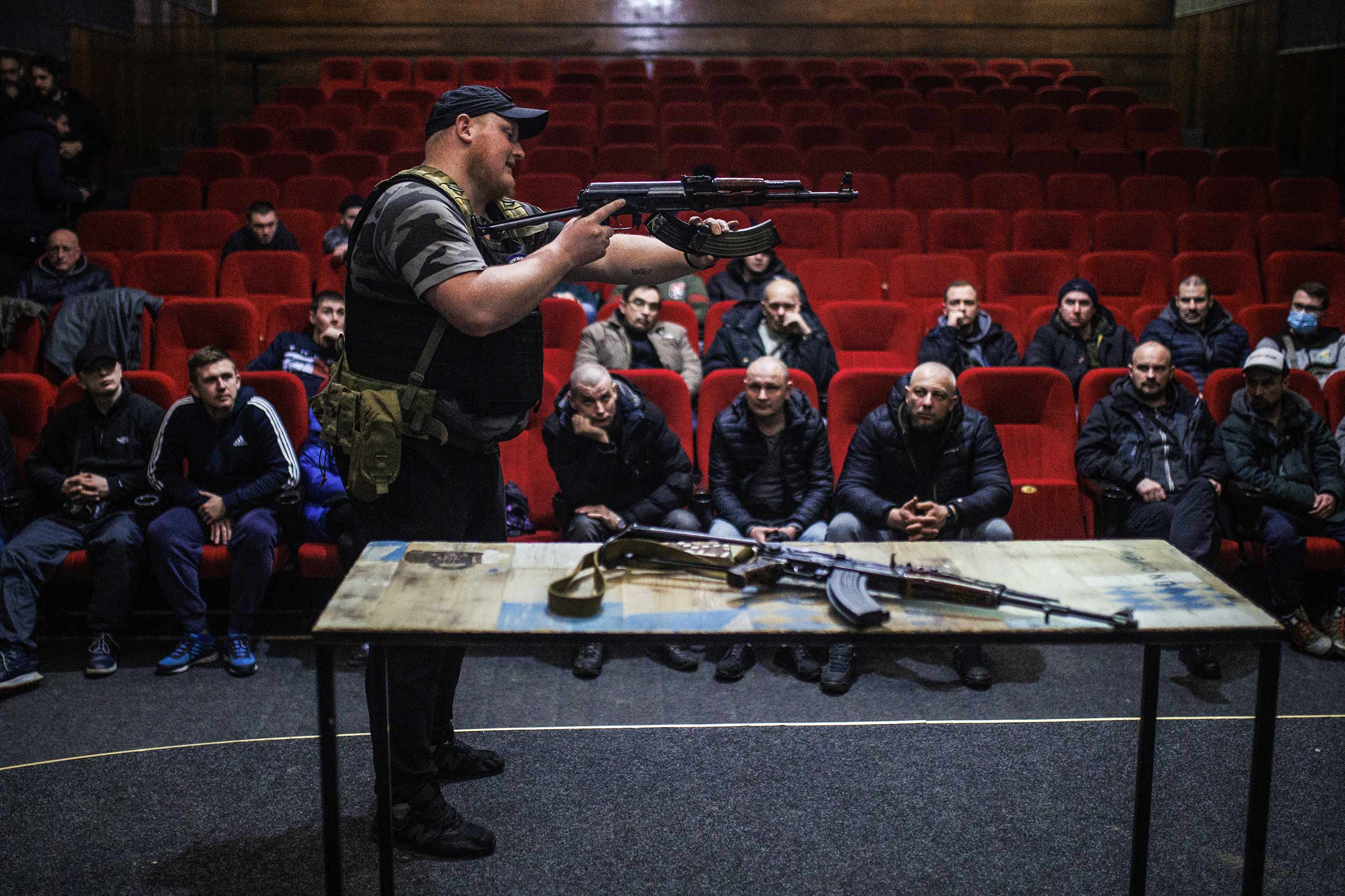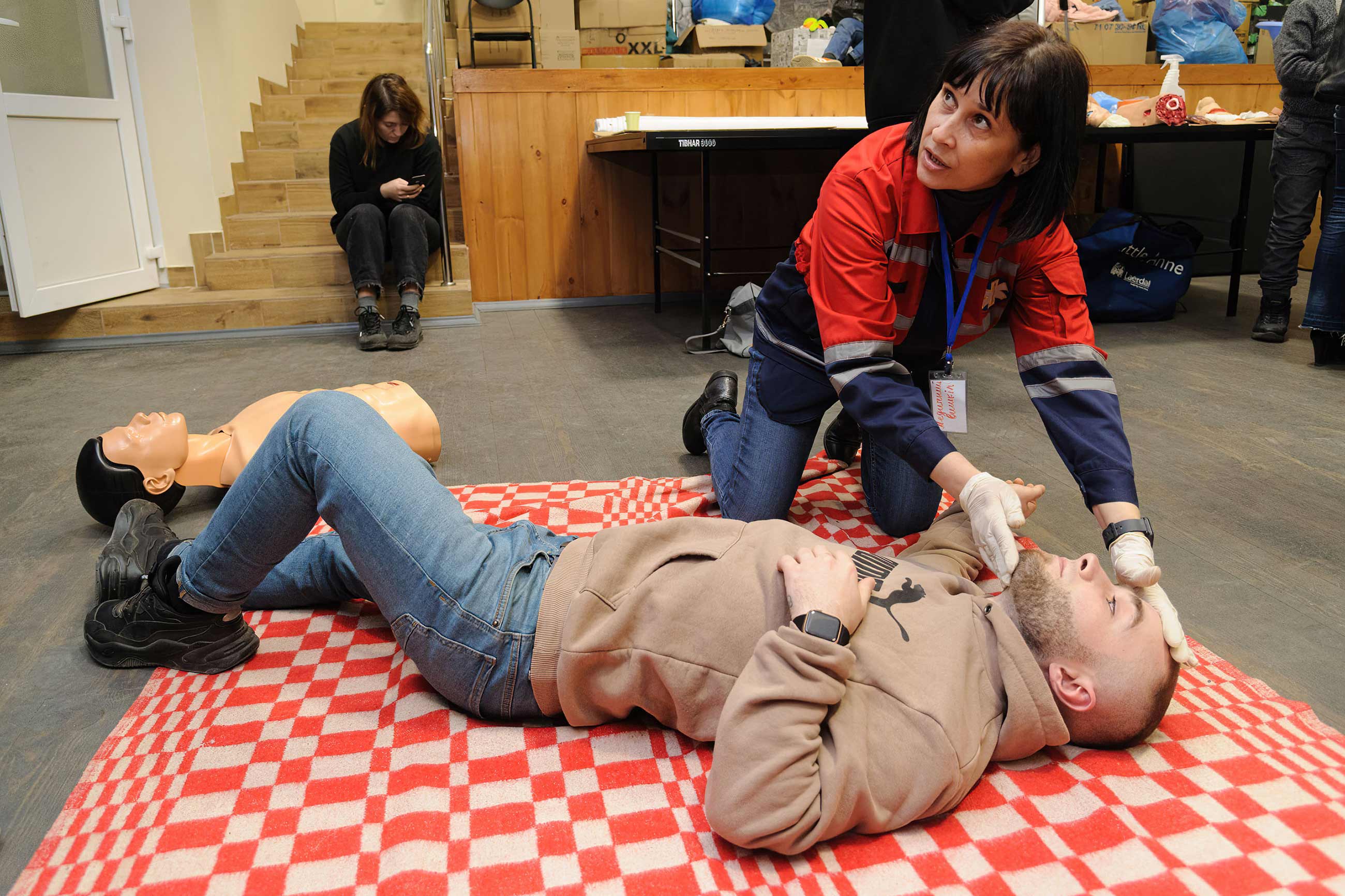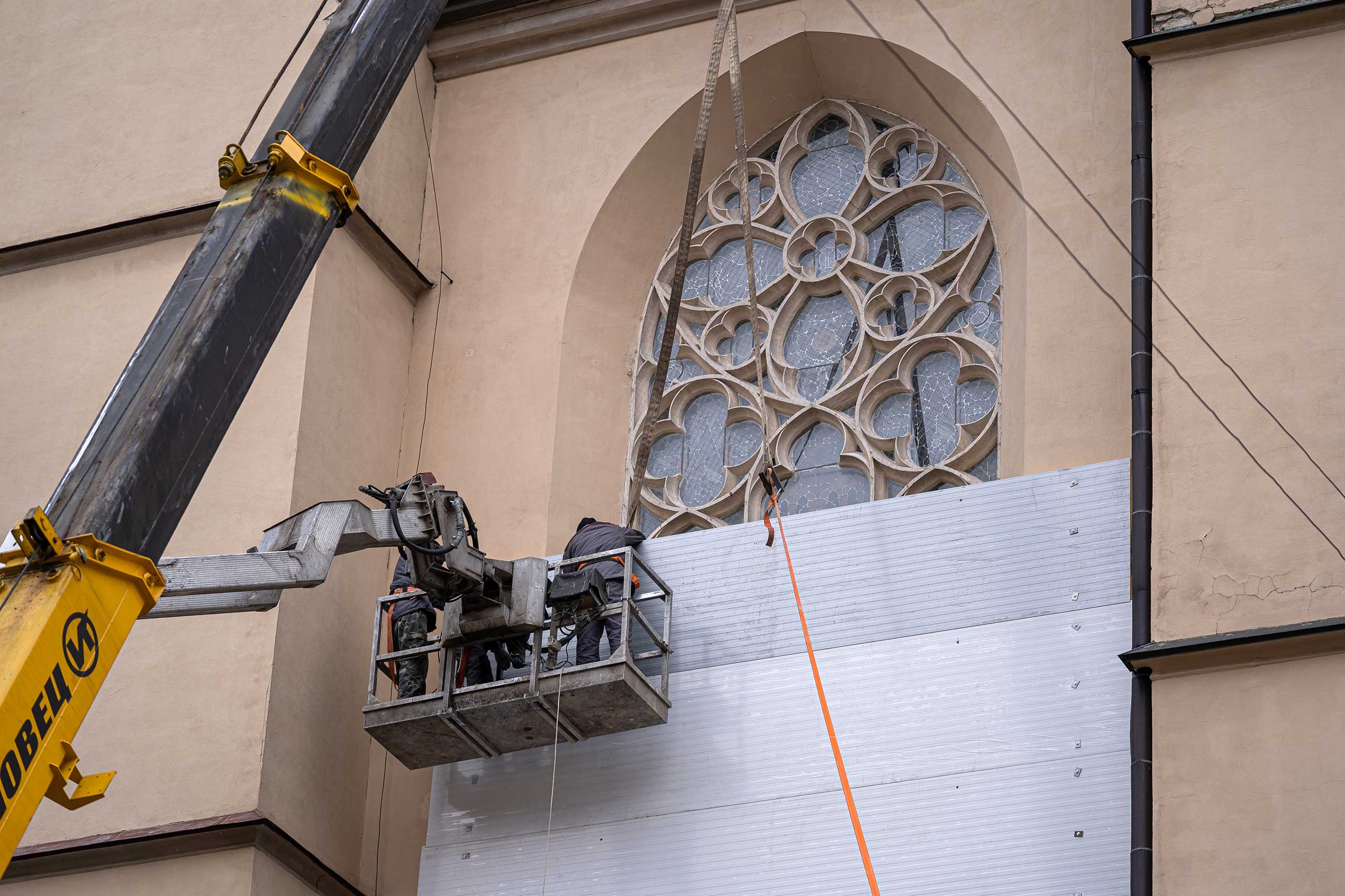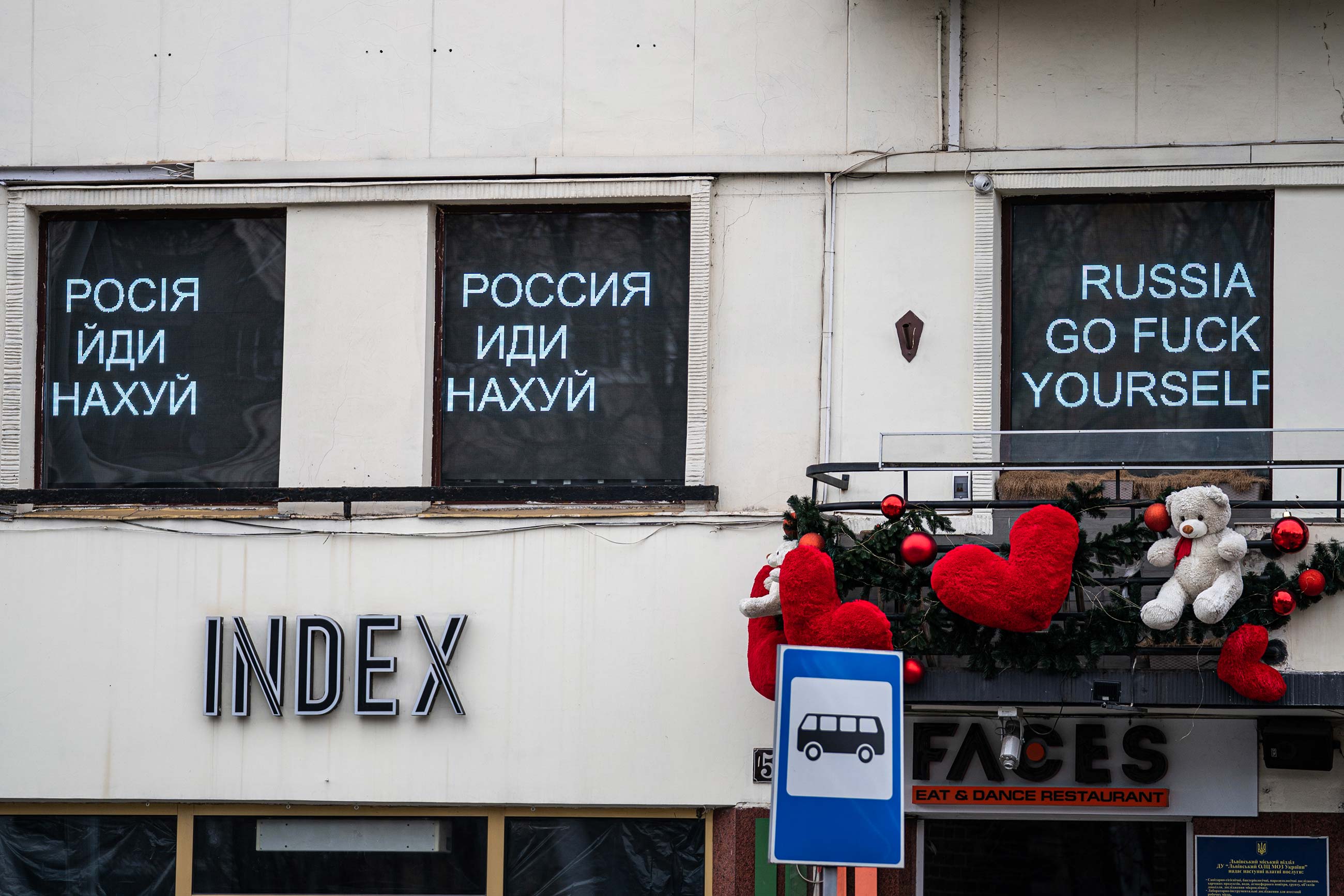At the beginning of the war, peaceful life in Ukraine was transferred to Lviv, a city to which, everyone was certain, the war would certainly not arrive. Even in the most pessimistic maps published by British and German tabloids delineating Russia’s incursions, the arrows describing attack routes never reached Lviv. But after the bombardment of the airport and twelve days of ceaseless air attacks, the covered stained-glass windows of various churches, wrapped up statues on the Market Square, courses at the Lviv movie center on how to use AK-47s and buildings in the city center surrounded by sandbags – after all that, military operations in Lviv’s very center no longer seem to be an impossible thought. Zaborona reveals what the city looks like after two weeks of martial law.

Old stained glass windows in the Church of the Assumption of the Blessed Virgin Mary in Lviv are covered with chipboard slabs in anticipation of possible Russian shelling. The government tries to protect architectural monuments in Lviv. The center of Lviv is a UNESCO World Heritage Site in anticipation of possible Russian shelling. Photo: Pavlo Palamarchuk / SOPA Images / LightRocket via Getty Images

Sandbags are piled on the street in Lviv amid the Russian invasion of Ukraine. Russian forces invaded Ukraine on 24th February. To date, their offensive has caused more than 1.5 million people to flee. Photo: Mykola Tys / SOPA Images / LightRocket via Getty Images

A young woman learns how to use an AK-47 assault rifle during a civilians self-defence course in the outskirts of Lviv. Photo: DANIEL LEAL / AFP via Getty Images

A man throws a cocktail Molotovs during a self-defence civilian course on the outskirts of Lviv. Photo: DANIEL LEAL / AFP via Getty Images

Civilians learn to use AK47 rifles in a cinema at the Lviv Film Center. Photo: Alejandro Martinez / Anadolu Agency via Getty Images 
Medical instructors train people to provide first aid for possible war injuries amid Russian invasion of Ukraine. Photo: Mykola Tys / SOPA Images / LightRocket via Getty Images

Workers protect the stained glass window of the Latin Cathedral in the old town on March 5, 2022 in Lviv, Ukraine. Photo: Pau Venteo / Europa Press via Getty Images

Stuffed animals on a balcony of one of the streets of the city of Lviv, on the eighth day since the beginning of the war in Ukraine, in Lviv. Photo: Pau Venteo / Europa Press via Getty Images

